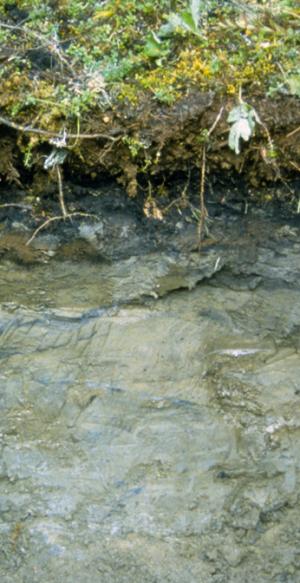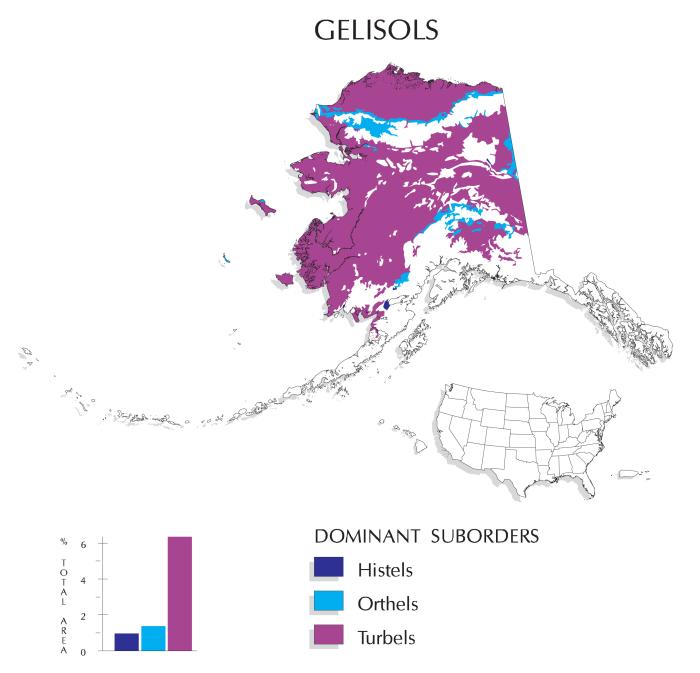Gelisols
Gelisols are soils that have permafrost near the soil surface and/or have evidence of cryoturbation (frost churning) and/or ice segregation.

The central concept of Gelisols is that of soils that have permafrost within 100 cm of the soil surface and/or have gelic materials within 100 cm of the soil surface and have permafrost within 200 cm.
Gelic materials are mineral or organic soil materials that have evidence of cryoturbation (frost churning) and/or ice segeration in the active layer (seasonal thaw layer) and/or the upper part of the permafrost.
Dominant Suborders
Histels
Histels are the Gelisols with large amounts of organic carbon. They are in Alaska. The vegetation is mostly mosses, sedges, and shrubs. The soils are used as wildlife habitat.
Orthels
Orthels are the Gelisols that show little or no evidence of cryoturbation. They occur throughout the Gelisol area in Alaska. The vegetation is mostly lichens, mosses, sedges, shrubs, black spruce, and white spruce. The soils are used mostly as wildlife habitat.
Turbels
Turbels are the Gelisols show cryoturbation in the form of irregular, broken, or distorted horizon boundaries, involutions, an accumulation of organic matter on top of the permafrost, ice or sand wedges, or oriented rock fragments. They occur throughout the Gelisol area in Alaska. The vegetation is mostly mosses, sedges, shrubs, and black spruce. The soils are used mostly as wildlife habitat. The Cryepts occur on slopes that receive more solar radiation or in areas where fire or land clearing has changed the thermal properties of the soils enough to allow the permafrost to thaw.

Gelisols are known to occur only in Alaska. Most of the soils have a layer of gelic materials that is underlain by permafrost. Permafrost influences pedogenesis through its effect on the downward movement of the soil solution and on the soil forming processes.

